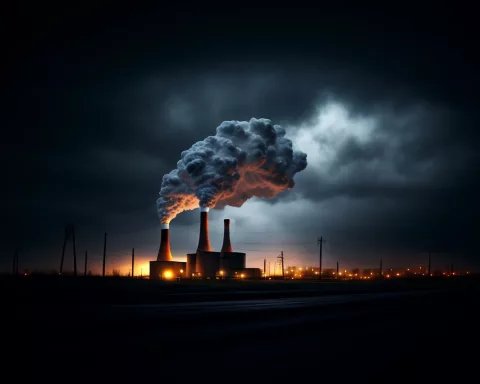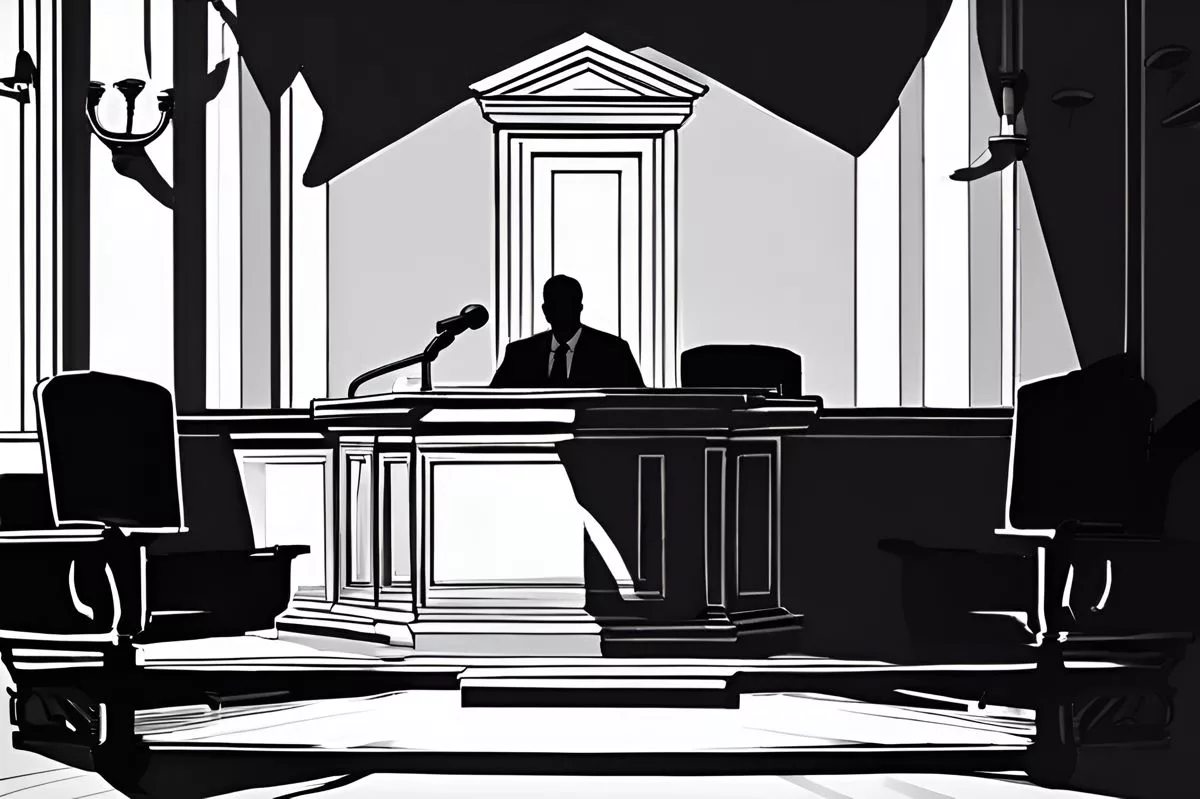Eskom, South Africa’s power giant, is facing tough times as it tries to recover from financial troubles and a huge municipal debt that could reach R100 billion. A recent meeting at Megawatt Park brought important leaders together to discuss ways to improve Eskom‘s operations and fight corruption. Despite some progress, the company still struggles with old agreements that make it hard to manage costs, and it has a lot of unused coal piling up. As Eskom plans its future, it must balance its past with new energy needs, aiming for a brighter, more sustainable path ahead.
What challenges is Eskom facing in its recovery efforts?
Eskom is grappling with financial instability, a growing municipal debt projected to reach R100 billion, and the need to address corruption. The company is also dealing with strategic issues related to coal stockpiles and “take or pay” agreements with Independent Power Producers, impacting its recovery efforts.
The Meeting at Megawatt Park
In the dynamic corridors of Eskom’s Megawatt Park, a significant assembly unfolded as South Africa’s pivotal parliamentary committees gathered to assess the state-owned enterprise’s progress. The Standing Committee on Public Accounts (SCOPA) and the Standing Committee on Appropriations convened with the task of reviewing Eskom’s operational and financial strategies. This gathering came at a promising time, as the country enjoyed nearly 200 days free from the burdens of unplanned power outages — a welcome relief from the usual load-shedding turmoil.
Eskom, a behemoth in South Africa’s energy domain, has historically been both a cornerstone and a conundrum. The committees aimed to delve into the core of Eskom’s recovery efforts, evaluating the improvements in governance and operational control. They also scrutinized the efforts to address misconduct and corruption within the organization. Despite notable advancements, Eskom’s financial stability remained a concern. The growing municipal debt threatened to climb to an alarming R100 billion by March of the following year, posing a risk of increased electricity tariffs for citizens.
SCOPA Chair Songezo Zibi emphasized the complexities involved in transforming Eskom, stating, “We appreciate that turning around an institution such as Eskom takes time.” However, financial instability loomed ominously, worsened by the slow eviction of unethical suppliers and delays in crucial staff vetting. The committees pressed for solutions to reclaim the R85 billion owed by municipalities, warning that this debt might swell to R128 billion by March 2026 if unresolved.
Strategic and Financial Challenges
The discussions extended beyond immediate financial recovery, as the committees explored strategic interactions with the Minister of Electricity. They sought insights into “take or pay” agreements with Independent Power Producers (IPPs), which financially strain Eskom when its coal fleet can fulfill power demands. This issue highlighted a broader challenge: reconciling legacy contracts with current operational needs. Additionally, committee members urged Eskom to address the dilemma of 14 million tonnes of coal stockpiled at Medupi Power Station, a project marred by significant delays impacting Eskom’s operations.
Eskom’s journey reflects broader trends in global energy politics, where energy giants often face the dual pressures of innovation and legacy commitments. In the mid-20th century, movements like Modernism championed progress and newness, leaving tradition behind. Similarly, Eskom must navigate the intricate balance between existing infrastructure and modern energy demands.
Industry veteran anecdotes offer a vivid portrayal of Eskom’s evolution. In the early 2000s, Eskom was celebrated for its formidable coal-fired power stations, a feat of engineering that showcased South Africa’s industrial capabilities. However, as the global energy landscape shifted towards renewables, Eskom found itself at a critical juncture, akin to the Impressionists of the 19th century, who departed from traditional art forms to embrace novel techniques and perspectives.
A Broader Dialogue on Energy and Accountability
The committees’ engagement with Eskom also mirrored a larger societal conversation about energy sustainability and accountability. As climate change reshapes global priorities, both governments and corporations are reassessing their roles in promoting sustainable development. Eskom’s path thus becomes a reflection of this worldwide shift, where financial viability, operational efficiency, and environmental responsibility converge.
As Eskom braces for its future, the overarching narrative balances cautious optimism with pragmatic concerns. The committees’ insistence on a comprehensive written submission ahead of Eskom’s 2023/24 annual financial statements underscores the significance of the upcoming challenges. This narrative arc aligns with the evolving governance practices in the corporate sector, where transparency and accountability hold pivotal importance.
Drawing parallels with literary movements that encapsulate transformation, Eskom’s journey evokes themes of a renaissance. Just as the Renaissance marked a new era of enlightenment, Eskom’s trajectory symbolizes a potential rebirth, rooted in innovation, accountability, and sustainable practices.
Looking Ahead: A Renaissance in Energy
At this critical juncture, Eskom stands at the crossroads of history and modernity, where past lessons shape future strategies. As custodians of South Africa’s energy landscape, Eskom’s leaders must channel resilience akin to the mythical phoenix, rising anew from the challenges of its recent past. The committees’ oversight, though rigorous, presents a pivotal opportunity for Eskom to recalibrate its course, ensuring a brighter, more stable energy future for the nation.
In conclusion, Eskom’s narrative is one of transformation and renewal, where the interplay of historical context and contemporary challenges shapes its path forward. As South Africa looks towards a sustainable energy future, Eskom’s journey will undoubtedly serve as both a cautionary tale and an inspiring example of resilience and reform in the face of adversity.
FAQ about Eskom’s Challenges and Future
What are the main challenges Eskom is currently facing?
Eskom is dealing with significant financial instability, a growing municipal debt projected to reach R100 billion, and the imperative to combat corruption. Additionally, it faces issues related to strategic coal stockpiles and restrictive “take or pay” agreements with Independent Power Producers, which complicate its recovery efforts.
How is Eskom addressing corruption and governance issues?
Eskom has been working on improving governance and operational control. The recent meetings with parliamentary committees focused on evaluating these improvements, as well as the ongoing efforts to address misconduct and corruption within the organization, which remain critical to restoring public trust and financial stability.
What is the significance of the recent meeting at Megawatt Park?
The meeting at Megawatt Park involved significant parliamentary committees, including the Standing Committee on Public Accounts (SCOPA) and the Standing Committee on Appropriations. They aimed to assess Eskom’s operational and financial strategies and discuss potential solutions to the escalating municipal debt, which could impact electricity tariffs and overall financial recovery.
What are “take or pay” agreements and how do they affect Eskom?
“Take or pay” agreements are contracts with Independent Power Producers that obligate Eskom to pay for a certain amount of electricity, regardless of whether it is used or not. These agreements financially strain Eskom, especially when its coal fleet is able to meet power demands, complicating the company’s recovery and cost management efforts.
How is Eskom managing its coal stockpiles?
Eskom is currently facing a challenge with approximately 14 million tonnes of coal stockpiled at Medupi Power Station. This situation is exacerbated by significant project delays and impacts Eskom’s overall operational efficiency. Addressing this dilemma is crucial for the company’s recovery strategy and to align with modern energy demands.
What does the future hold for Eskom in terms of sustainability and innovation?
Eskom is at a pivotal juncture where it must balance its historical commitments with the need for innovative and sustainable energy solutions. As the energy landscape shifts globally towards renewables, Eskom’s path forward will involve embracing new practices and technologies while ensuring financial viability and operational efficiency. The narrative of transformation and renewal is key to Eskom’s future as it seeks to rebuild and serve South Africa’s energy needs responsibly.












